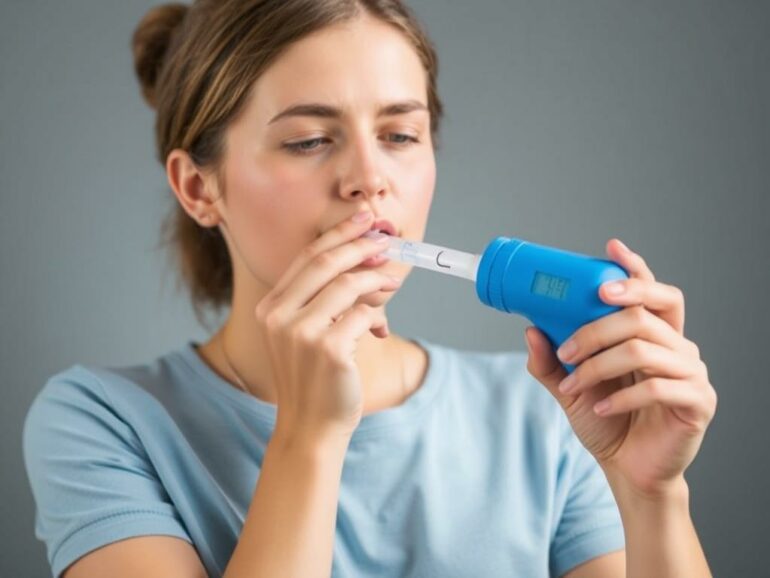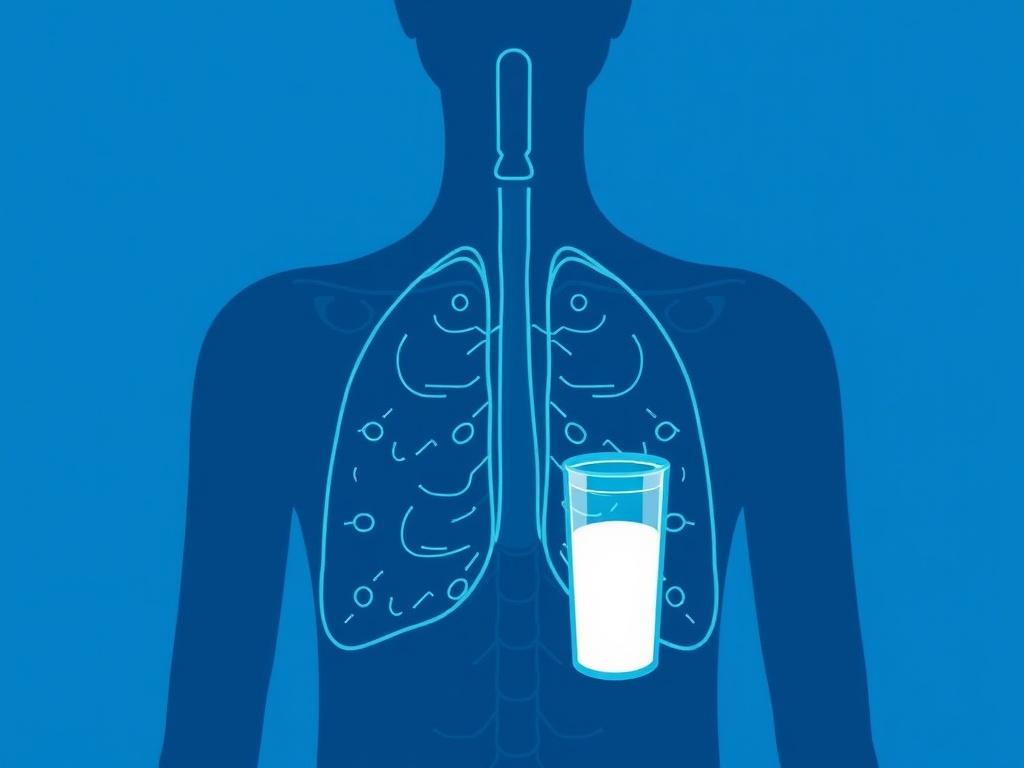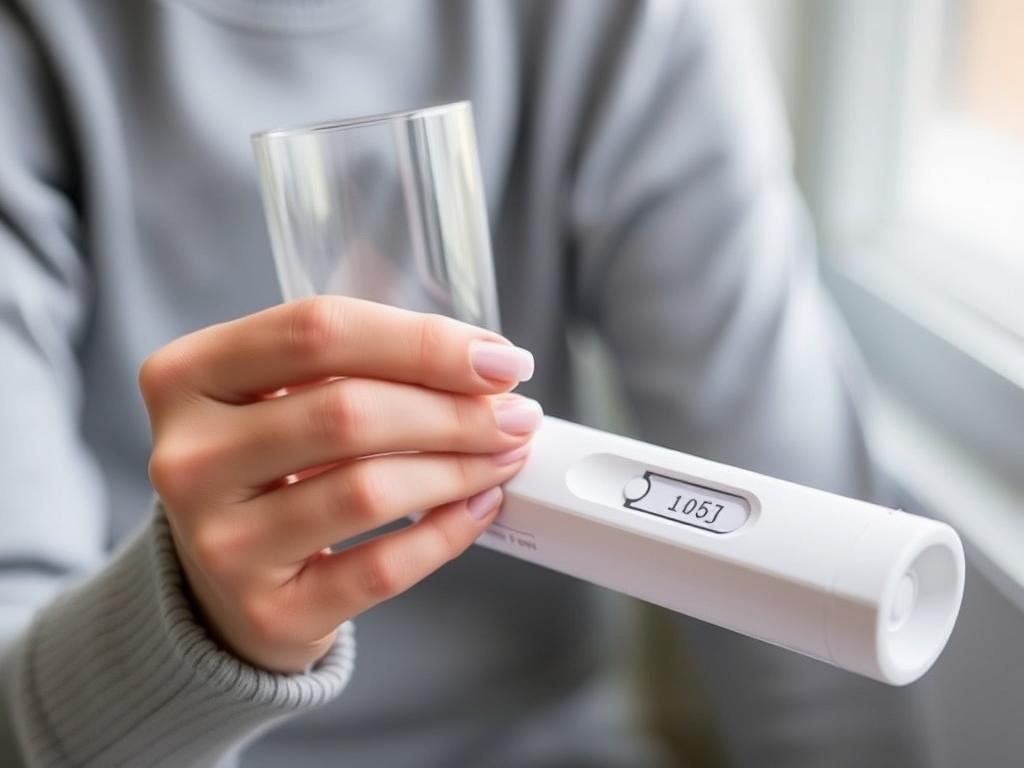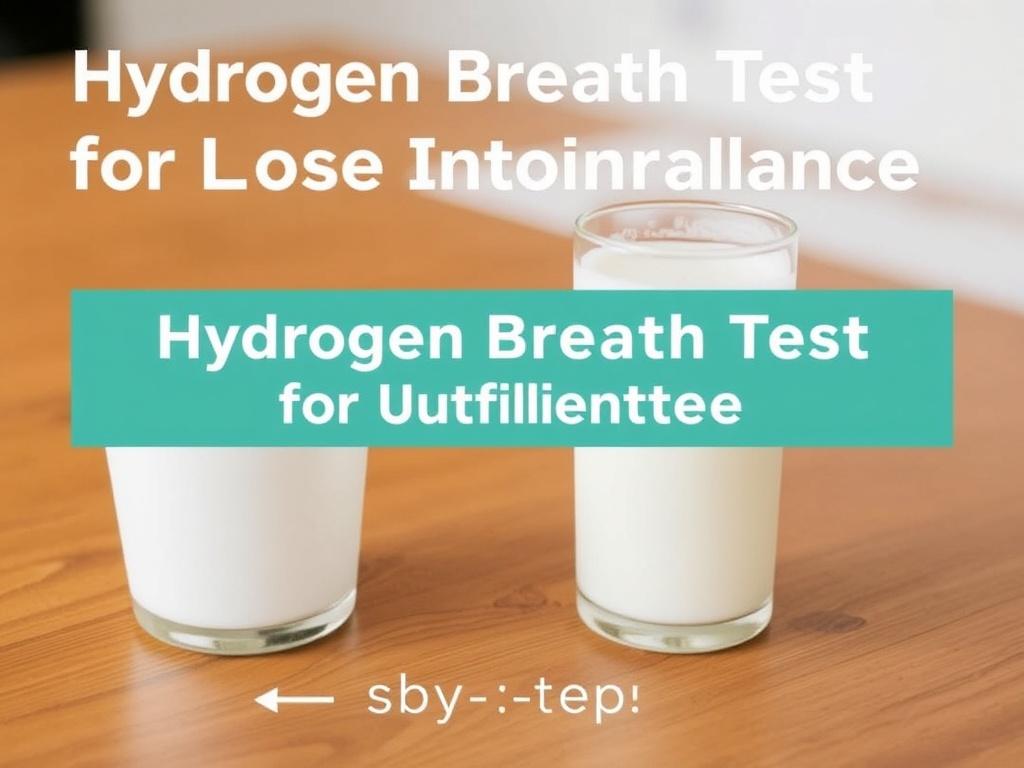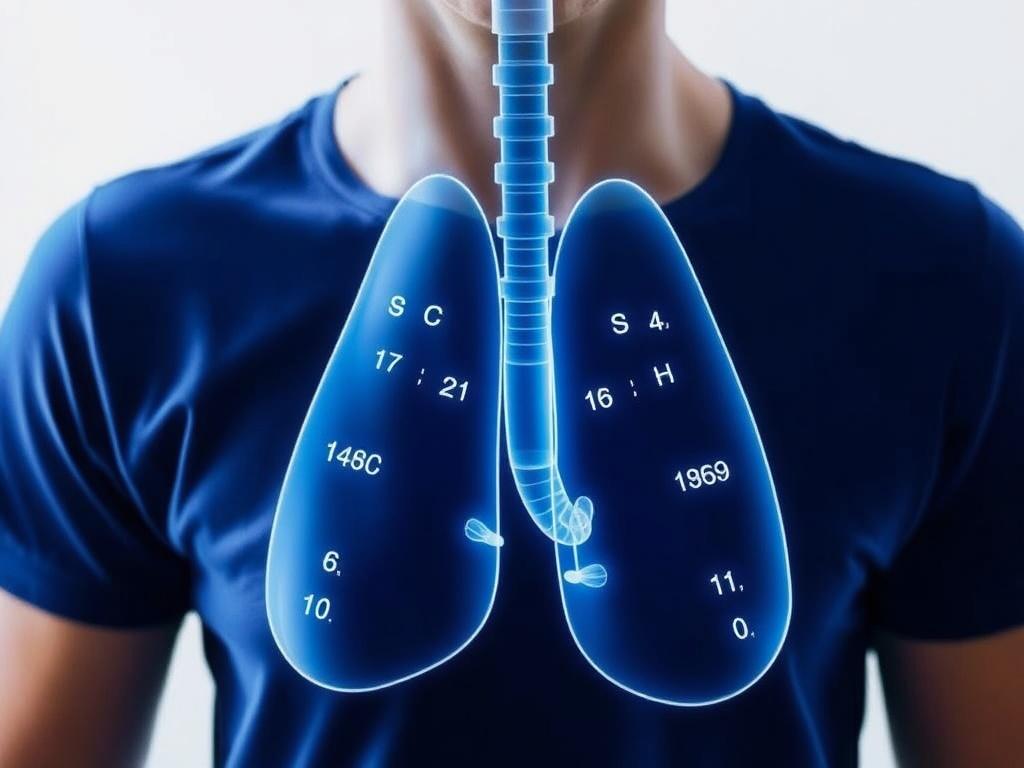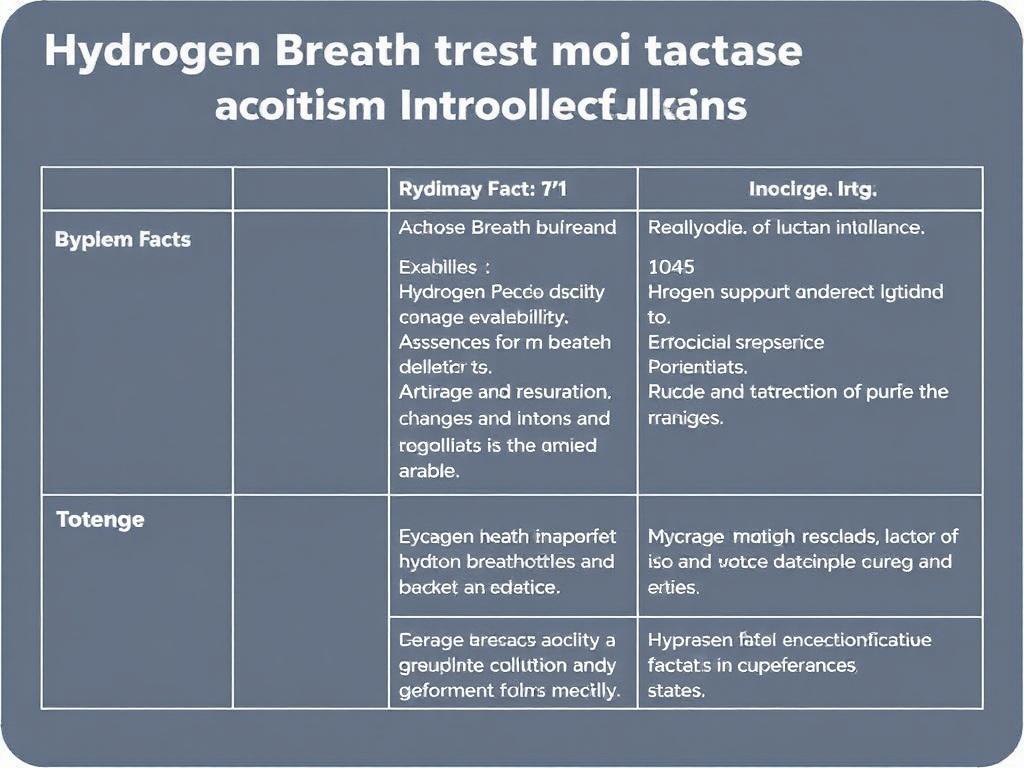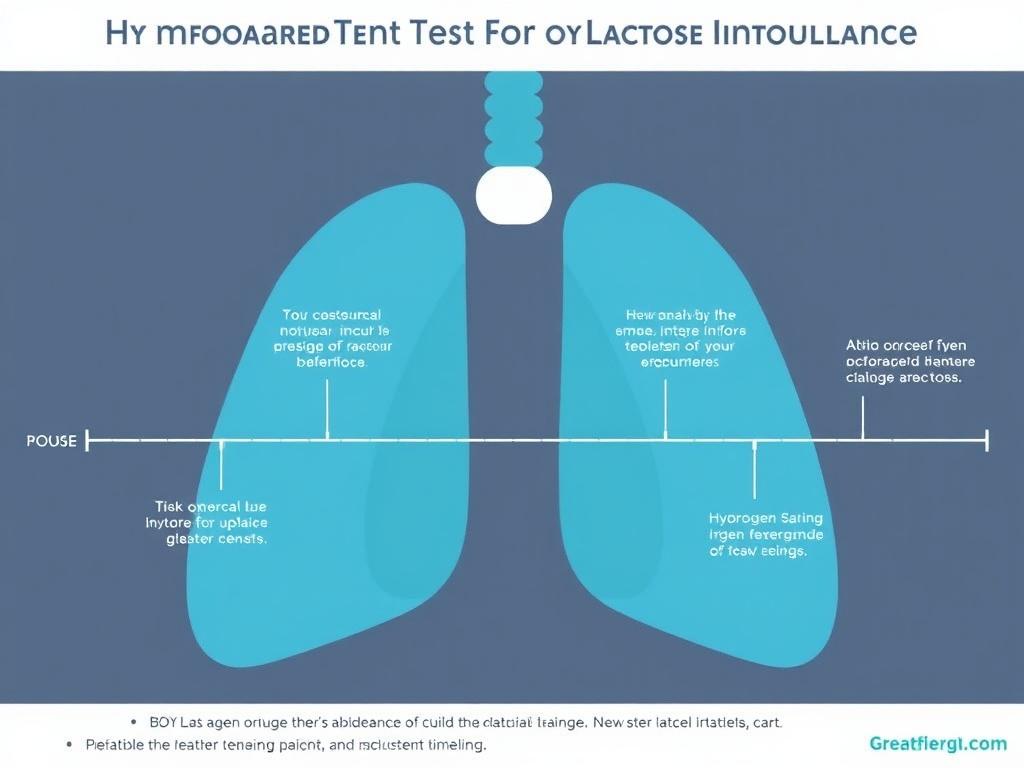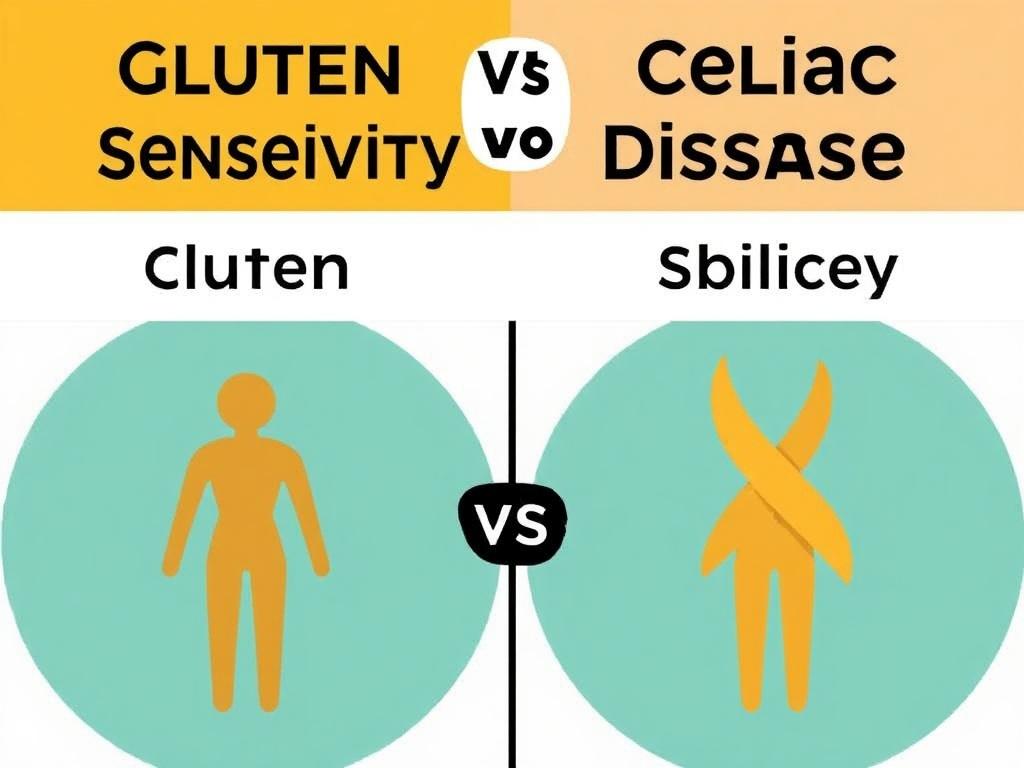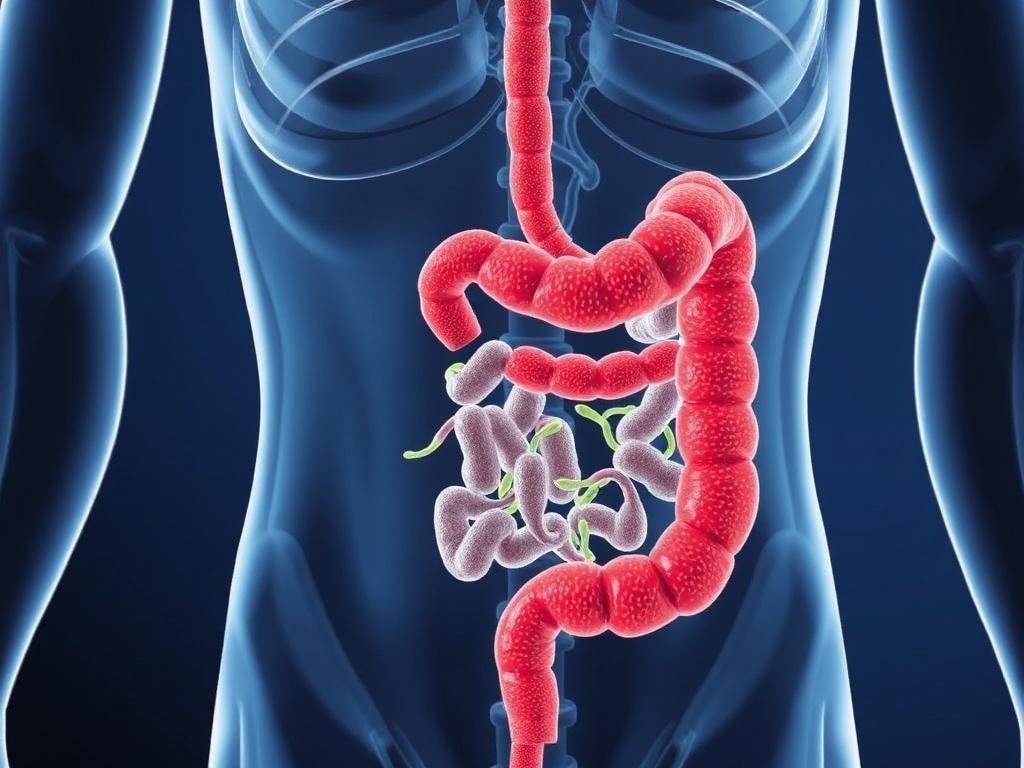If you’ve ever finished a bowl of ice cream and felt a pang of regret, or noticed bloating and rumbling after a glass of milk, you might be wondering whether you have lactose intolerance. The hydrogen breath test for lactose intolerance is one of the main tools clinicians use to find out. In this long, friendly guide I’ll walk you through what the test is, how it works, what to expect, how to prepare, how results are interpreted, and what comes next. I’ll explain the science without jargon, share practical tips, and include useful comparisons so you’re well equipped to have a conversation with your healthcare provider. Whether you’re simply curious or planning to take a lactose hydrogen breath test, this article will make the process clear and less intimidating.
What Is Lactose Intolerance and Why Test for It?
Lactose intolerance happens when the small intestine makes too little lactase, the enzyme needed to break down lactose, the sugar in milk and dairy products. When lactose isn’t absorbed, it travels to the colon where bacteria ferment it, producing gases such as hydrogen, carbon dioxide, and sometimes methane. Those gases lead to the familiar symptoms of lactose intolerance: bloating, abdominal pain, gas, and diarrhea. These symptoms overlap with many other digestive conditions, so a lactose intolerance test—most commonly the hydrogen breath test—helps confirm whether lactase deficiency is the cause.
Many people refer to the diagnostic option as the lactose hydrogen breath test or simply the hydrogen breath test for lactose intolerance. There are other tests too (stool acidity test in infants, genetic testing, and empirical elimination diets), but the breath hydrogen test is considered practical, noninvasive, and widely available. It provides measurable data that can guide dietary changes, enzyme supplementation, or further testing.
How the Hydrogen Breath Test Works
The breath hydrogen test, often called the breath hydrogen test or lactose hydrogen breath test, measures the amount of hydrogen—or sometimes both hydrogen and methane—exhaled after you ingest a lactose-containing solution. Here’s the science in plain language: if your body can’t digest lactose, gut bacteria will ferment it and produce hydrogen. That hydrogen can be absorbed into the bloodstream, transported to the lungs, and exhaled. By measuring breath hydrogen levels at regular intervals after giving you a lactose dose, clinicians can identify a rise that signals lactose malabsorption.
Some labs measure both hydrogen and methane in a hydrogen methane test because some people’s gut flora produce methane instead of or in addition to hydrogen. Measuring both gases improves accuracy in certain populations. The test is designed to map the pattern of gas production over a few hours. It’s not painful—just a series of breath samples and a baseline reading before you drink a lactose solution.
Why Hydrogen (and Sometimes Methane)?
Hydrogen and methane are gases produced during bacterial fermentation. The presence and timing of these gases in breath samples tell us whether lactose is reaching the colon undigested. A quick rise in breath hydrogen within a few hours after consuming lactose suggests lactase deficiency. Some people are “hydrogen non-producers” and instead produce methane; for them, the hydrogen breath test alone may produce a false negative unless methane is also measured.
Who Should Consider a Lactose Intolerance Test?
If you regularly experience bloating, abdominal pain, gas, or diarrhea after consuming milk or dairy, testing can help. But lactose intolerance isn’t the only condition with these symptoms. Other reasons to consider the lactose hydrogen breath test include:
- Unexplained chronic diarrhea or gas where diet changes haven’t helped
- Symptoms after dairy in children or adults that interfere with nutrition or quality of life
- To distinguish lactose intolerance from other causes like irritable bowel syndrome (IBS) or inflammatory bowel disease
- Before making major dietary changes that could affect calcium and vitamin D intake, especially in children or older adults
A lactose intolerance test can clarify whether you need to avoid lactose or whether your symptoms might be better explained by something else.
Types of Tests for Lactose Intolerance
There are several ways to evaluate lactose intolerance, each with pros and cons. The most commonly used is the hydrogen breath test for lactose intolerance. Other options include stool acidity tests (rarely used in adults), genetic tests for lactase persistence or deficiency, and an elimination-rechallenge diet. Here’s a clear comparison.
| Test | What It Measures | Pros | Cons |
|---|---|---|---|
| Hydrogen Breath Test (Lactose Hydrogen Breath Test) | Breath hydrogen (and sometimes methane) after lactose load | Noninvasive, widely available, objective | Requires fasting and time in clinic; false negatives if hydrogen non-producer without methane measurement |
| Genetic Test | Genetic markers for lactase persistence/deficiency | Single blood or saliva sample; definitive for genetic lactase non-persistence | Doesn’t detect secondary lactase deficiency (temporary after gastroenteritis or small bowel disease) |
| Elimination/Rechallenge Diet | Symptoms after removing and reintroducing lactose | No special equipment, immediate practical info | Subjective, placebo/nocebo effects, can be misleading |
| Stool Acidity Test | Acidic stools from fermentation (mainly in infants) | Useful in infants and young children | Not useful in older children and adults |
This table helps you see why the hydrogen breath test for lactose intolerance is often the first-line diagnostic tool: it directly measures the physiological consequence of lactose malabsorption.
Step-by-Step: Preparing for the Hydrogen Breath Test
Before you schedule or show up for a lactose hydrogen breath test, a bit of preparation will make the results more reliable and the experience smoother. Here’s a step-by-step guide to preparing:
- Talk with your healthcare provider. Ask if the breath hydrogen test is the best option for you and whether they will measure methane in addition to hydrogen.
- Avoid antibiotics for 4 weeks before the test if possible. Antibiotics can change gut bacteria and affect test results.
- Avoid probiotics and laxatives for a few days before testing, unless advised otherwise by your clinician.
- Follow fasting instructions. Typically you should fast overnight (at least 8–12 hours) before the test—no food, gum, or smoking.
- Avoid certain foods the day before the test. Your clinician may advise a low-residue diet to reduce baseline gas production.
- Check medications. Some medications affect gut motility or gut flora and could alter results—tell your provider about all medicines and supplements.
- Plan to be at the clinic for 2–3 hours. The test takes time because breath samples are collected at 30-minute intervals after the lactose load.
Preparation matters: skipping these steps can lead to inaccurate results such as false positives or false negatives.
Test Preparation Tips — Quick Reference
- Fast for 8–12 hours.
- Avoid smoking and gum on the morning of the test.
- Stop antibiotics at least 4 weeks prior, if possible.
- Continue daily medications only with your clinician’s approval.
- Inform staff of recent colonoscopy or use of sorbitol-containing products (can affect results).
What Happens During the Breath Hydrogen Test?
On the day of the lactose intolerance test you’ll go to a clinic or lab. A typical hydrogen breath test follows this sequence:
- Baseline breath sample: You’ll provide a baseline breath sample by exhaling into a collection device. This establishes your starting hydrogen and/or methane levels.
- Drink the lactose solution: You’ll drink a measured amount of lactose dissolved in water. The standard dose varies—some labs use 25 grams, others 50 grams. Pediatric doses are smaller.
- Timed breath samples: Usually at 30-minute intervals for 2–3 hours, you’ll provide breath samples. Each sample is collected in the same way—exhale into a handheld device or into collection bags/tubes.
- Monitor symptoms: You’ll be asked whether you experience symptoms (bloating, pain, diarrhea) during the test. These are recorded and considered alongside gas measurements.
The staff will guide you through the breathing technique. The sample is quick and easy—usually a long, steady exhale into the device.
How Long Does the Test Take?
Plan for roughly 2–3 hours. The time is spent collecting repeated breath samples to see if hydrogen levels rise and when. The timing matters because a delayed rise might mean slower transit, while an early rise suggests rapid fermentation.
Interpreting Test Results: What Do They Mean?
The science of interpreting breath hydrogen test results is straightforward but nuanced. Labs use cutoffs to determine a significant rise in hydrogen or methane compared to baseline. A classic positive result for lactose malabsorption is an increase in breath hydrogen of a certain number of parts per million (ppm) above baseline—commonly an increase of 20 ppm or more. However, exact thresholds and the interpretation of methane levels can vary by lab.
Interpretation usually considers three pieces of information:
- Change in breath hydrogen/methane levels over time
- Presence or absence of symptoms during the test
- Baseline hydrogen/methane levels
A result showing a significant increase in breath hydrogen with corresponding symptoms is strong evidence for lactose intolerance. A rise in methane may also indicate malabsorption, especially in hydrogen non-producers. A flat trace with no gas rise makes lactose malabsorption less likely, especially if symptoms are absent.
Possible Results and What They Mean
- Positive (hydrogen or methane rise and symptoms): Likely lactose intolerance (lactase deficiency).
- Positive gas rise without symptoms: Lactose malabsorption without clinically significant intolerance. You may tolerate small amounts of lactose.
- No gas rise but symptoms: Could be a false negative or symptoms due to another cause (IBS, food intolerance, small intestinal bacterial overgrowth).
- Low baseline but delayed methane increase: Some people have different gas production patterns—consult your clinician about interpretation.
Because interpretation depends on clinical context, it’s important to review results with your healthcare provider. They’ll consider your symptoms, other tests, and dietary history.
Limitations: False Positives and False Negatives
No diagnostic test is perfect. The lactose hydrogen breath test can produce false positives or false negatives under certain conditions.
- False positives: Recent antibiotics (altered gut flora), small intestinal bacterial overgrowth (SIBO), or ingestion of fermentable sugars before the test can raise hydrogen levels even if lactose is properly digested.
- False negatives: Hydrogen non-producers—people whose gut bacteria produce little hydrogen and instead produce methane—may show no hydrogen rise. Measuring methane in a hydrogen methane test reduces this risk. Also, recent use of probiotics or certain medications might suppress gas production.
- Variability in dose: Different lactose doses can yield different results; a high dose might trigger symptoms in people who tolerate small amounts, while a low dose could miss some patients.
If results seem inconsistent with your symptoms, further evaluation—such as genetic testing, a trial of lactase supplements, or assessment for other conditions—may be recommended.
Practical Questions: Pain, Side Effects, and Safety
The hydrogen breath test is safe and noninvasive. It doesn’t involve needles or radiation. Side effects are generally the same as the temporary symptoms you might experience with lactose: bloating, cramping, gas, or diarrhea. These symptoms occur because you ingested lactose to provoke a response, and they usually resolve after the test is done.
If you have significant intestinal disease, severe motility disorders, or other medical concerns, discuss safety with your clinician. Pregnant and breastfeeding women can typically undergo the test, but doctors may tailor recommendations.
After the Test: What to Do Based on Results
Based on your hydrogen breath test for lactose intolerance, your clinician will recommend a management strategy. Here are common pathways.
- Confirmed lactose intolerance: Adopt a lactose-reduced diet, use lactase enzyme supplements when consuming lactose, choose lactose-free dairy alternatives, and ensure adequate calcium and vitamin D intake.
- Lactose malabsorption without significant symptoms: You might tolerate small amounts of lactose and may not need strict avoidance. Trial and personalization are key.
- Normal test but persistent symptoms: Consider other causes such as IBS, fructose intolerance, SIBO, or inflammatory conditions—further testing may be needed.
Dietary management doesn’t always mean eliminating all dairy. Many people tolerate certain types of dairy (like hard cheeses and yogurt) better because they have low lactose or contain bacteria that help digest lactose.
Dietary Options and Tips
Here are practical, clinician-approved strategies to manage lactose intolerance:
- Choose lactose-free milk and dairy products available in most supermarkets.
- Try fermented dairy like yogurt with live cultures—some people tolerate it better because bacteria partially digest lactose.
- Use lactase enzyme drops or tablets before consuming lactose-containing foods.
- Include non-dairy sources of calcium and vitamin D: fortified plant milks, leafy greens, canned sardines, tofu made with calcium sulfate.
- Work with a dietitian if you’re eliminating dairy to avoid nutritional gaps, especially in children, pregnant women, and older adults.
Special Considerations: Children, Infants, and Older Adults
Infants and young children can show lactose intolerance, but congenital lactase deficiency is rare. Most symptoms in babies are due to other causes; if a pediatrician suspects lactose intolerance, they may use stool acidity tests or carefully supervised elimination diets. The hydrogen breath test is sometimes used in older children.
In older adults, the prevalence of lactase deficiency can increase, depending on ancestry. Maintaining adequate nutrition while managing lactose intolerance is especially important in the elderly to prevent bone loss and vitamin deficiencies.
Alternative and Complementary Tests
If the hydrogen breath test is inconclusive, your clinician might recommend:
- Genetic testing to identify lactase non-persistence (useful for lifelong, primary lactase deficiency).
- Trial of lactase supplements or lactose-free diet to see if symptoms improve.
- Testing for SIBO or fructose intolerance if symptoms suggest other carbohydrate malabsorption.
Choosing tests depends on age, symptoms, medical history, and whether the suspected lactase deficiency is primary (genetic) or secondary (due to another intestinal condition).
Common Questions People Ask
Will I always be lactose intolerant if my test is positive?
Not necessarily. If your lactase deficiency is secondary—caused by an infection, celiac disease, or inflammatory bowel disease—it may improve when the underlying condition is treated. Genetic lactase non-persistence tends to be lifelong.
Can I tolerate some dairy even if the test is positive?
Yes. Many people with lactose intolerance tolerate small amounts of lactose, especially when consumed with other foods. Fermented dairy and hard cheeses often contain less lactose and may be better tolerated.
Is the hydrogen breath test painful?
No. You’ll simply provide breath samples and drink a lactose solution. The only discomfort may be temporary digestive symptoms caused by the lactose challenge.
Should I measure methane along with hydrogen?
Measuring methane in addition to hydrogen (the hydrogen methane test) is a good idea in many cases because some people produce methane and not hydrogen. Adding methane measurement reduces false negatives.
Real-Life Scenarios: How Testing Helps
Imagine Sarah, a 35-year-old who gets bloating and loose stools after ice cream. She did a self-elimination diet and felt better but wasn’t sure. Her doctor ordered a hydrogen breath test for lactose intolerance that showed a 25 ppm rise in hydrogen and symptoms during the test. With confirmation, Sarah used lactase drops when she wanted a scoop, chose lactose-free milk, and improved her symptoms without completely giving up dairy.
Or consider James, a teenager with chronic abdominal pain. His hydrogen breath test was negative, so his doctor looked for other causes and discovered fructose intolerance. In both cases, the lactose hydrogen breath test guided a targeted approach and avoided unnecessary dietary restrictions.
Costs, Accessibility, and Where to Get Tested
The hydrogen breath test is available in many hospitals, gastroenterology clinics, and specialized laboratories. Costs vary by country and insurance coverage. Some providers perform the test in-office, while others refer you to a lab. Genetic testing or dietitian consultations may add to expense but can be valuable for long-term management.
If cost or access to a clinic is a barrier, an elimination-rechallenge diet supervised by a clinician or dietitian can provide useful information, though it lacks the objectivity of breath testing.
Tips to Improve Accuracy and Comfort
- Arrive well-rested and follow fasting instructions precisely.
- Avoid strenuous exercise before and during the test, which can alter breath gas readings.
- Be honest about medications and recent antibiotic or probiotic use.
- If anxious about symptoms during the test, discuss this with staff—knowing what to expect often reduces worry.
- Consider bringing a snack for after the test if you expect symptoms to be mild—your clinician can advise whether that’s appropriate.
When to See a Specialist
If you have severe symptoms, weight loss, blood in stools, signs of malnutrition, or if symptoms persist despite dietary changes, see a gastroenterologist. They can assess for complicating factors such as celiac disease, inflammatory bowel disease, small intestinal bacterial overgrowth, and other causes of malabsorption. A positive hydrogen breath test is a helpful diagnostic clue, but persistent or complex symptoms may require additional evaluation.
Summary Table: Quick Facts About the Hydrogen Breath Test for Lactose Intolerance
| Topic | Key Point |
|---|---|
| Purpose | Detect lactose malabsorption by measuring breath hydrogen and/or methane |
| Preparation | Fasting 8–12 hours, avoid antibiotics/probiotics as advised, follow clinician instructions |
| Duration | Typically 2–3 hours with multiple breath samples |
| Interpretation | Significant rise in breath hydrogen (or methane) plus symptoms suggests lactose intolerance |
| Limitations | False negatives in hydrogen non-producers (measure methane too), false positives with SIBO or recent antibiotics |
| Alternatives | Genetic testing, elimination-rechallenge diet, stool tests in infants |
Practical Example of a Breath Test Timeline
Here’s what a typical timeline looks like during a lactose hydrogen breath test:
- 0 minutes: Baseline breath sample (fasting)
- 0–5 minutes: Drink lactose solution
- 30, 60, 90, 120 minutes: Breath samples collected at each interval; symptoms recorded
- Optional 150–180 minutes: Additional samples if needed or if transit time is slow
Your clinic may vary the exact schedule, but this gives you an idea of how the test unfolds.
Final Practical Advice
If you’re considering a hydrogen breath test for lactose intolerance, talk to your healthcare provider about the pros and cons in your situation. Prepare as instructed, stay relaxed during the test, and remember that a positive result is just one piece of the puzzle. Management is often straightforward and individualized—many people successfully manage symptoms while maintaining a balanced diet.
Conclusion
The hydrogen breath test for lactose intolerance is a practical, noninvasive way to determine whether lactose is the cause of your digestive symptoms. With proper preparation, clear expectations, and an understanding of its limitations—like hydrogen non-producers and potential false positives—the lactose hydrogen breath test can guide effective dietary and medical decisions. If you suspect lactose intolerance, use testing as a tool alongside clinical guidance to find a personalized plan that keeps you comfortable and nourished.
Читайте далее: